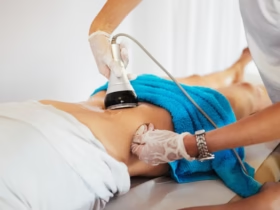Tooth extraction can initially be an intimidating prospect, but knowledge of the procedure and recovery may help calm your mind. This guide takes you through the extraction steps and what to expect in recovery to ensure a smooth process from start to finish.
What to Do Before the Tooth Removal Chair
Let us understand what is a tooth extraction. It is the process of tooth removal from a socket. Dental professionals perform thorough assessments before extraction. Typically, they will examine how damaged the tooth and surrounding tissues are. X-rays give the practitioner valuable information about what they are dealing with before extracting the tooth. From this evaluation, the healthcare worker will discuss the process, risks, and readiness with the person. A customized plan guarantees the process is more specific to you.
The Extraction Procedure
Tooth extraction is performed as either a simple or surgical procedure. Straightforward extractions happen if the tooth is easily seen over the gum line. On the other hand, surgical extractions are needed if the tooth is impacted or not easily accessible. The dentist administers local anesthesia to the area before the procedure, resulting in a pain-free experience. Sedation is an option for surgical extractions for further comfort.
Once the patient is anesthetized, the dentist prepares the tooth using tools designed to loosen it. Sometimes, cutting the tooth into small pieces may be necessary to remove it. The dentist preserves nearby tissues from trauma, so healing is faster. After the tooth is extracted, the location is cleaned, and gauze is placed there to soak up the blood.
Post-Extraction Care
The importance of proper post-extraction care during recovery is not to be underestimated. Patients also get precise post-op instructions to keep the healing process smooth and complications-free. Taking it easy during the first 24 hours is best. Patients are advised to refrain from vigorous exercise during this time, as doing so can interfere with healing.
Controlling pain and swelling is essential. Analgesics are the prescribed medicines; over-the-counter medicines are acceptable, but potent medicine is prescribed in certain instances. A cold compress can be applied to reduce the swelling of the wound. In addition, keeping the head up while lying down reduces heaviness in the area.
Dietary Adjustments and Oral Hygiene
How one eats has a massive effect on recovery. A diet consisting initially of soft foods and liquids is recommended, with a gradual increase in solid foods as healing progresses. You should stay away from hot, spicy, or crunchy foods that will irritate the area where you had the tooth extracted. While hydration is essential, avoid using straws post-surgery so the suction does not disrupt the clot needed for healing.
Good oral hygiene is still crucial, even after extraction. Cleaning the mouth with gentle brushing and saltwater rinses will minimize bad breath, even without disturbing the healing area. Rinsing or spitting should not be done vigorously, as it will interfere with recovery.
Keeping Track of Recovery and Possible Issues
Monitoring the healing process will also quicken the response time to any complications. Swelling and tenderness are normal, but if there is severe pain, heavy bleeding, or signs of infection, medical attention is needed. Dentists will give you a specific timeline of when to see them again.
One common complication is a dry socket, which happens when the blood clot is dislodged too early and exposes the bone underneath it. It creates extreme agony and prolongs recovery. Following aftercare instructions can significantly minimize the chance of a dry socket.
Long-term Implications for Oral Health
Once the area is rehabilitated, it is time to keep it clean. Regular dental checkups help to check overall health and can prevent issues from recurring in the future. Continue to take their oral hygiene seriously by brushing and flossing every day.
Replacing missing teeth with implants or bridges may also be advisable when there is more than one extraction. Such solutions are designed to keep things in alignment and working, making it easier to maintain oral health in the long run.
Wrapping Up
People feel more comfortable with the procedure when they understand how the surgery works and the recovery process. If patients are prepared for what is about to happen and follow all aftercare, they can have a seamless recovery and prevent any harm to their teeth. Continuous engagement with your dentist addresses any worries on your journey, making it a positive experience and less stressful.







Leave a Reply